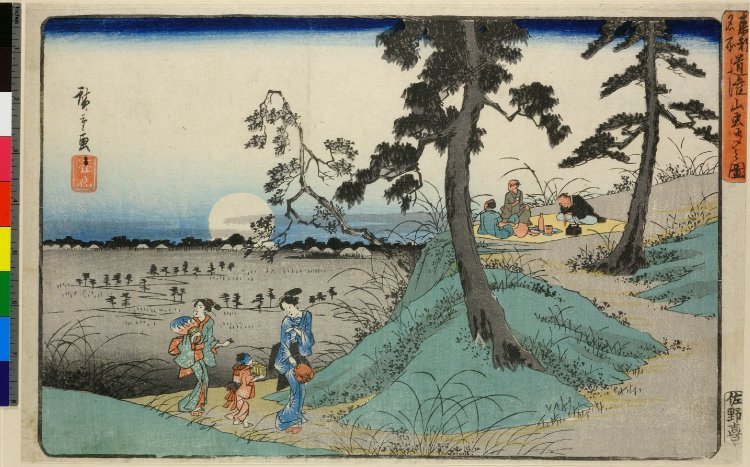The best part of autumn is yet to come...
I'm waiting for
the insect singing


By the Western calendar, autumn begins with the equinox which is around Sept 22 or 23rd. On the other hand, by the traditional Japanese almanac, we are already into autumn—it started on Aug 8th. Still hot on that date, even in days of old, but that was the point judged to be the peak of summer and therefore the beginning of the end of it, as more and more autumn would creep in everyday.
There are two data points for the beginning of autumn. But I think the point where everyone knows autumn is here is when the night insects start singing. They start to do this towards the end of summer but it doesn't really pick up until autumn. For this reason, there are a number of kigo (season words) mentioning the insect voices, and they are all kigo for autumn.
Japan has been in love with the autumn insect singing for generations. Even as far back as Sei Shonagon they were talking about it. In her incredibly famous Pillow Book she wrote:
日入り果てて、風の音、虫の音など、はたいふべきにあらず。
Which might be translated something like:
When the sun has completely set, the sound of the wind and the chirping of insects—it is beauty beyond words.
I wrote the above in English and didn't translate it (yet), but the kigo I was thinking of was mushi no koe (虫の声) "Insect voices" which is a kigo for all of autumn. As with many kigo, it's very convenient in that it is exactly five mora, so it easily fits into the first or last phrase of a haiku when written in the traditional style.
It is still very hot outside. It is already 32°C (≈90°F) and it's not even noon yet. At night the autumn insects really haven't started up yet. Too warm maybe or something—I don't know. But I'm hoping they start soon. I'm looking forward to the nightly music.
❦

 |
David LaSpina is an American photographer and translator lost in Japan, trying to capture the beauty of this country one photo at a time and searching for the perfect haiku. He blogs here and at laspina.org. Write him on Twitter or Mastodon. |



